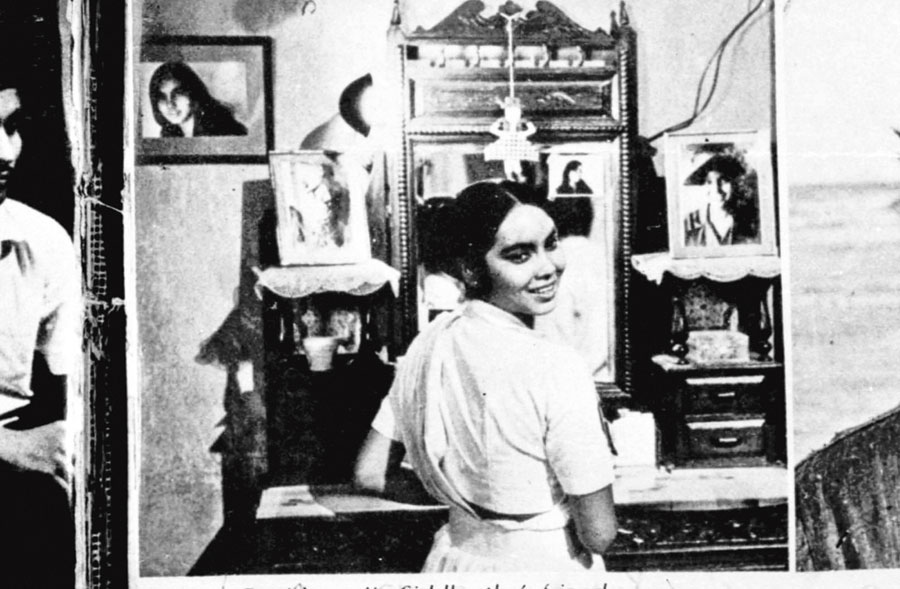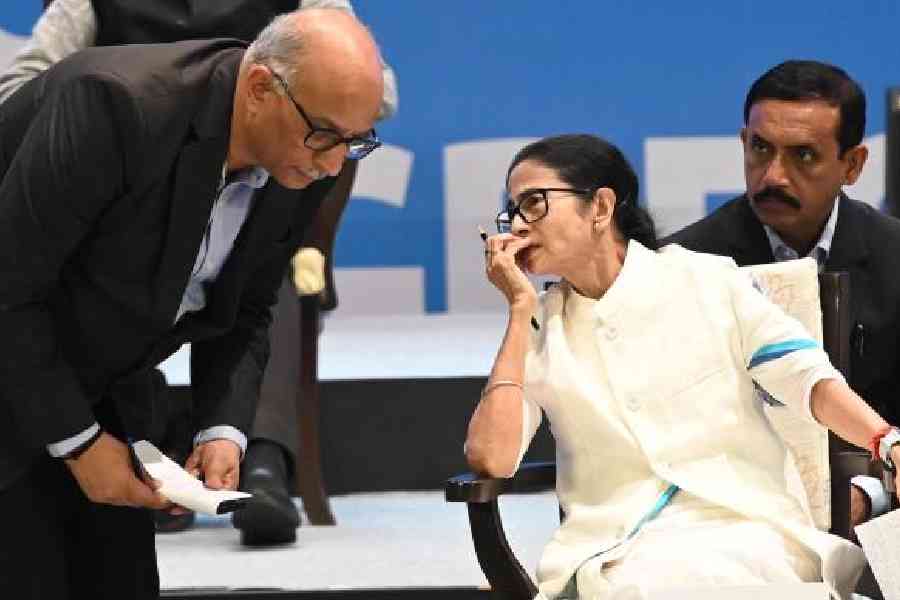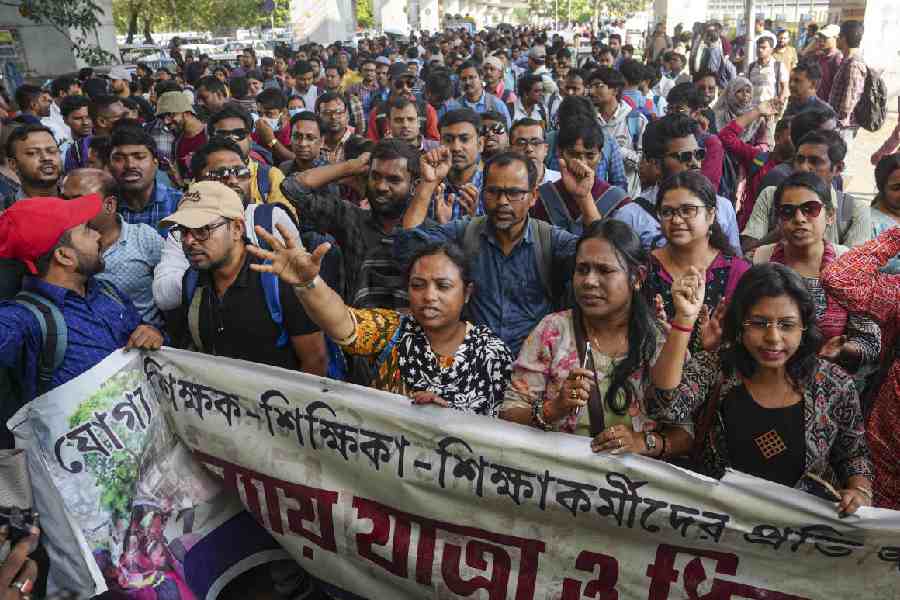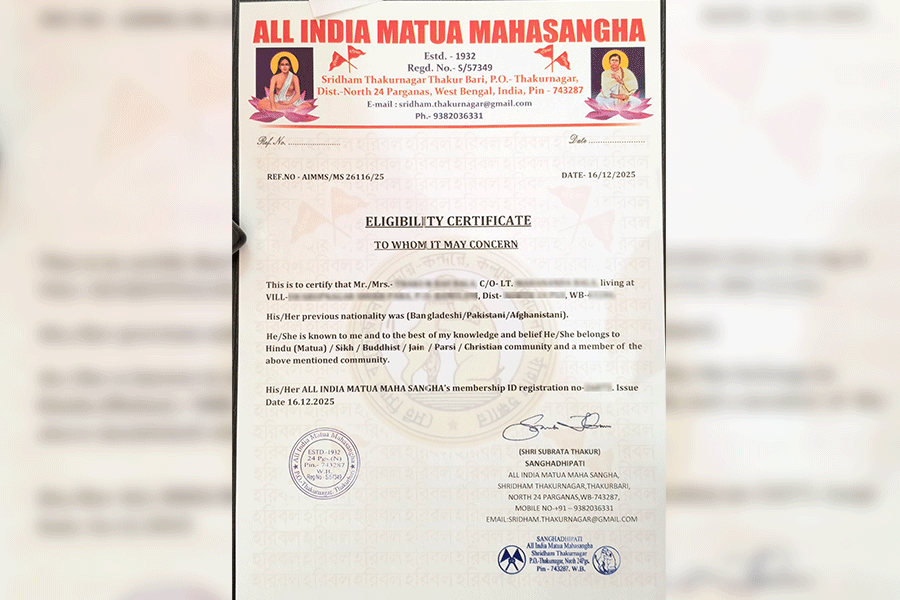Miss Shefali, the danseuse who smashed several glass ceilings and became India’s Cabaret Queen, died on Thursday. She was 77.
Her family in Sodepur, on the city’s northern fringes, said the end came around 6am. She was undergoing treatment for kidney-related ailments.
Born Arati Das, she burst into the city’s nightlife when barely in her teens as Miss Shefali, the first woman of colour doing cabaret.
Her heyday was in the late 1960s and 1970s. When Satyajit Ray chose to depict a slice of this life in Seemabaddha (1971), he turned to her. She also did a bit role in his Pratidwandi (1970), where in a scene she appears in a brassiere, a daring decision back then.
Hailing from a refugee family, Shefali was destiny’s child. As a little girl, she spent nights without dinner till she decided to leave home to seek job as a domestic help.
The 12-year-old learnt her first lessons by peeping from behind the curtain and watching guests dance in the house she worked in. One of the guests introduced her at Firpo’s, the fashionable restaurant in Chowringhee.
The girl raised in a hovel was now transferred to a huge apartment opposite Raj Bhavan. Thus started a roller-coaster ride that reached dizzying heights of stardom but also plunged to depths of darkness and despair.
Shefali lived life on her own terms, breaking stereotypes along the way. She was the biggest draw at the hotels where she danced. Cabaret till then was the preserve of white girls. At Firpo’s, the girl with no education and speaking only the Bangal tongue was trained in western dance forms and dining etiquette to be able to entertain in high society.
After eight years at Firpo’s, where her name became synonymous with the Lido Room, she crossed over to the Oberoi Grand. There her starting salary was Rs 3,000 — up from Rs 700 — a month with free signing authority in all its restaurants and a room in the hotel itself.
That 15-year-old innings included colourful chapters like her friendship with Amitabh Bachchan, who put up at the hotel to shoot for Do Anjaane.
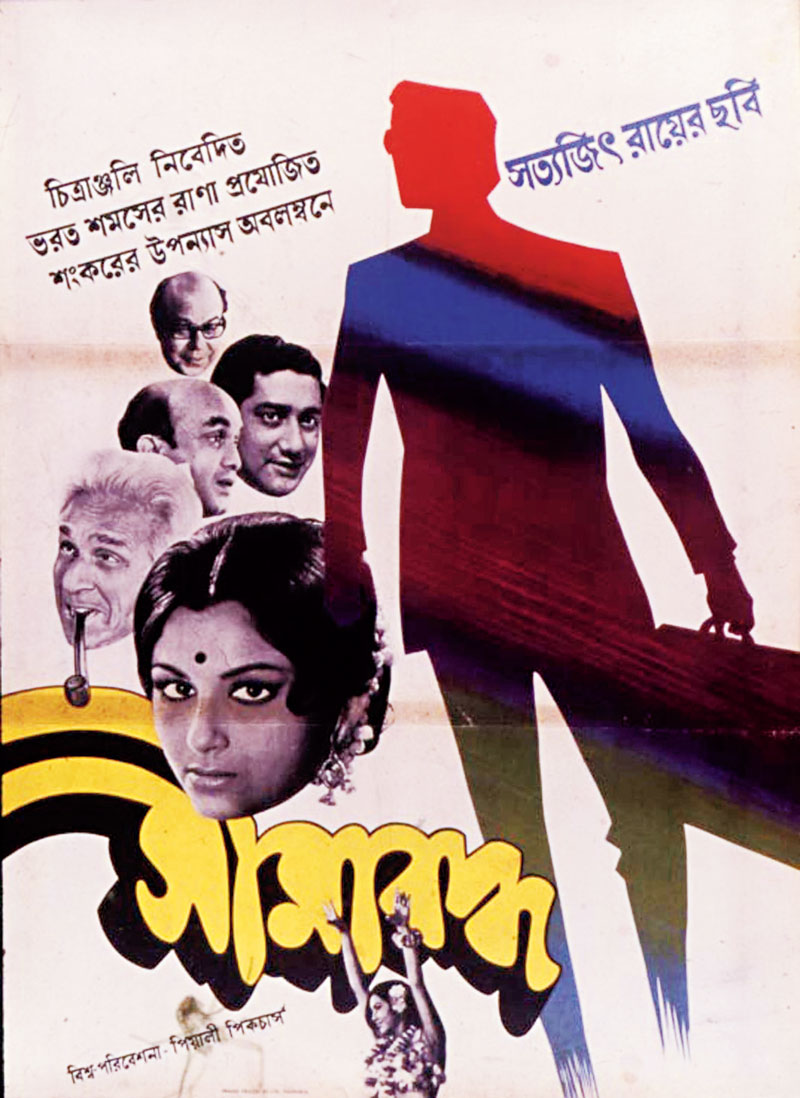
A poster of Seemabaddha featuring Miss Shefali just below the title of the film
When she joined Biswarupa theatre at the behest of actor Tarun Kumar in 1971, her name featured in advertisements above those of veteran co-actors like Bikash Roy and Satya Bandyopadhyay, much to their resentment.
Her monthly income then was an astronomical Rs 22,000-25,000 a month as she juggled dancing in theatre and hotel. She would appear in a series of commercially successful plays such as Barbadhu, Samrat O Sundari (her first substantial acting role on stage), Saheb Bibi Golam, Projapoti, Ashlil and Ora Kara.
Although she moved with the swish set, including Uttam Kumar and Supriya Devi, one thing that eluded her was respectability.
“People think dancing in bra and panty means cabaret,” she lamented in many an interview. When her father built a small house with the money she sent home, he chose a plot away from the public eye. Such was the stigma surrounding a Bengali cabaret girl!
“I was called vishkanya (poison woman of myths, whose touch was fatal). Apparently, I injected poison in people’s mind,” she would say.
A Kali devotee, she took pride in her dancing prowess, be it in Cha Cha Cha, Charleston, Can Can, Arabian Belly, Rumba, Samba or Hawaiian, which she danced in Ray’s film. “I can challenge any dancer in Indian dance forms too,” she said.
Her autobiography, Sandhya Raater Shefali, was published in 2014.
Later in life, she ran a school in Dum Dum where she taught hip hop and salsa.
She fell on hard times towards the end but her pride was intact.
Her last rites were performed at the Panihati burning ghat. Chief minister Mamata Banerjee expressed her condolences on Twitter.

